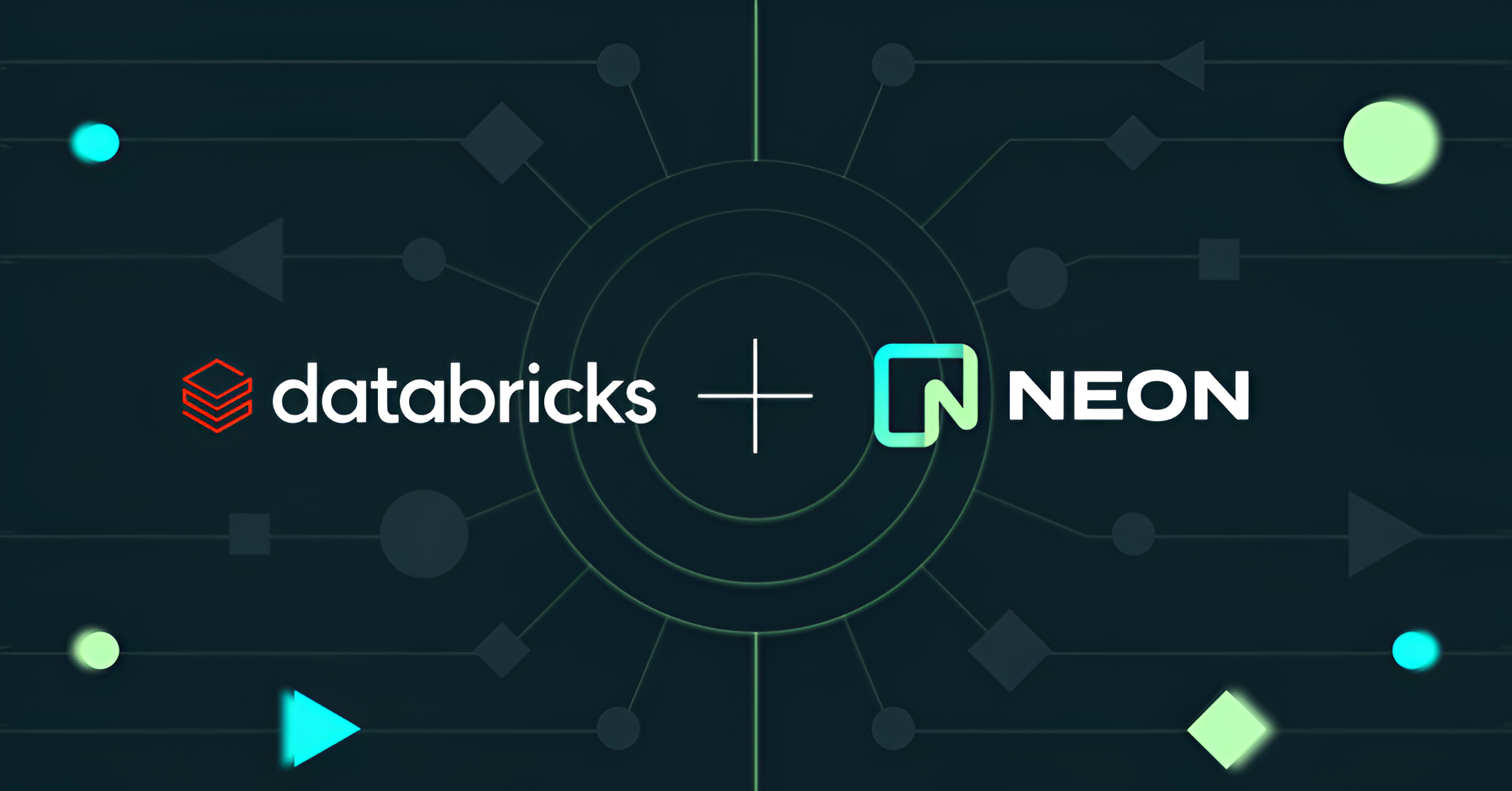With Neon, Databricks added a crucial database piece to the data lakehouse puzzle

Databricks made its third billion-dollar acquisition in less than two years when it announced it was acquiring database startup Neon for a cool $1 billion last week. It followed the purchase of Mosaic in 2023 and Tabular last year in the billion-dollar club.
Neon gives them a fast, serverless, Postgres, OLTP (online transaction processing) database. Now, rather than having to partner with other companies to provide database services, Neon provides Databricks with a powerful offering to call its own, says Sanjeev Mohan, a former Gartner analyst who now runs his own shop, SanjMo and has covered database technologies for many years.
Mohan believes it actually puts Databricks into a new league. Instead of competing with Snowflake in the cloud data lakehouse business, he believes Databricks is now competing with the big 3 cloud vendors – Amazon, Microsoft and Google and this acquisition could allow them to control the data lakehouse space. (A data lakehouse combines a data lake and a data warehouse under a single architecture.)
“Neon really puts Databricks [in the center of] this lakehouse space. So even though they invented the lakehouse concept, they have been all analytically-focused until now. With Neon, now they add an operational piece, one that is a lightweight, serverless solution running on the edge that really expands the workloads and the use cases Databricks can support in the future,” Mohan said.
Agent-Postgres connection
The move signals a shift from storing and analysis to building applications on top of the data, and Neon is particularly well suited to agentic applications. Devin Pratt, an analyst at IDC who specializes in databases, sees the agentic piece as key to the deal and Postgres playing a big role in that.
“Neon’s database excels at Agentic AI because it’s built on PostgreSQL and delivered as a fully managed service. PostgreSQL ensures the low latency and high performance we discussed. It also gives Databricks and its customers full access to PostgreSQL’s ecosystem including community support and extensions, which could unlock new use cases,” he said.
In fact, Databricks CEO Ali Ghodsi sees this as a key aspect of this acquisition. “By bringing Neon into Databricks, we’re giving developers a serverless Postgres that can keep up with agentic speed, pay-as-you-go economics and the openness of the Postgres community,” Ghodsi said in a statement.
With Neon, now they add an operational piece, one that is a lightweight, serverless solution running on the edge that really expands the workloads and the use cases Databricks can support in the future.
And as Neon noted in a blog post announcing the deal, they are a Postgres solution uniquely suited to handle agentic workloads. “AI agents need state — they need to store context, embeddings, user interactions, intermediate plans, and more. But traditional Postgres setups weren’t built for this scale or dynamism. Neon was.”
But Mohan is somewhat skeptical about the agentic messaging. From his perspective, vendors are ahead of customers when it comes to agentic solutions. “When technology marches faster than businesses requirements or needs, then we are in danger of disappointing the market. And I think vendors are moving faster than their customers. I’m not seeing businesses really asking for agents right now,” he said.
Agents feel the need for speed
As the companies combine, the goal is to remove agentic bottlenecks with Neon’s ability to create databases on the fly. “Together, Databricks and Neon will work to remove the traditional limitations of databases that require compute and storage to scale in tandem — an inefficiency that hinders AI workloads,” Databricks wrote in a statement.
Pratt says Neon can already create databases extremely quickly, and combining that with the Databricks platform could be a powerful combination. “Now you're going to have analytic data and transactional data from customers side by side,” he said. “From an agentic standpoint, it gives developers one place to create agents inside one unified platform, which, of course, reduces latency and will increase speed.”

That’s if it all comes together. Acquisitions fail for all kinds of reasons, even ones that make sense like this one. It will be up to Databricks to incorporate this technology smoothly into the Databricks platform from both a technology and personnel perspective, taking advantage of the knowledge the new team will be bringing to the company.
Three billion-dollar acquisitions in two years is a lot for a company that’s still private, but Databricks can apparently afford it. At the end of last year, it raised $10 billion on a $62 billion valuation. When you have that kind of cash combined with that level of value, it leaves room to make strategic acquisitions like this one to fill in holes in the platform -- and Neon appears to fill a big one.
Like all acquisitions of this sort, it must clear the normal regulatory process, but if it does, this could be the final step before this company finally goes public. We have been waiting for years for this to happen, but it has instead been taking advantage of its high value to patiently put all of the pieces into place first. One of these days though, it's going to happen and it will be a more complete company when it does.
Note: This is an expanded version of a news story that originally appeared in FastForward #22.





